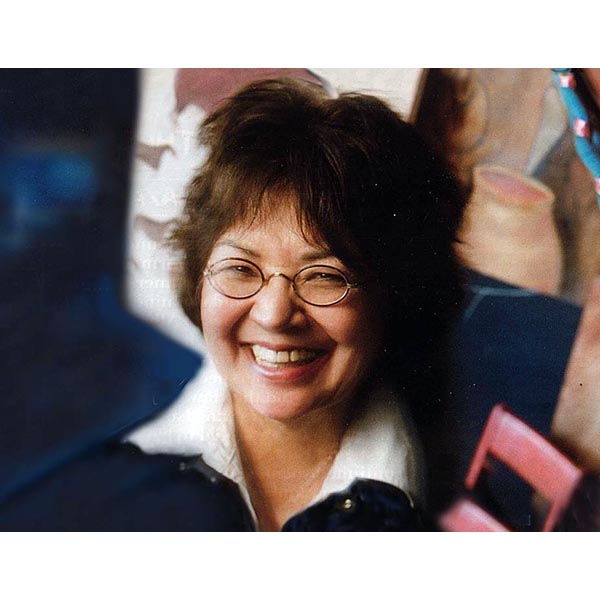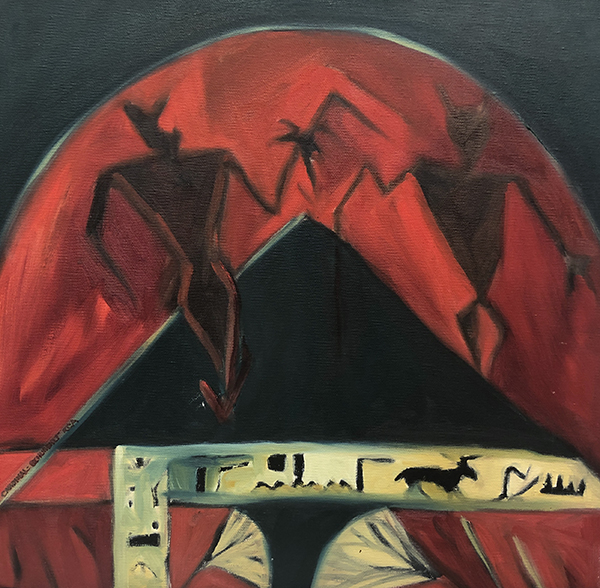Joane-Cardinal Schubert
(1942-2009) - Artist Biography
Cardinal-Schubert was born in 1942 in the town of Red Deer. She attended the Alberta College of Art + Design (now Alberta University of the Arts) in 1962 where she studied painting, printmaking, and multimedia. Cardinal-Schubert's indigenous culture was omitted from the education system, the media, history books, and arts. She focused her work primarily on her family history and Kainaiwa ancestry. In 1973 she began a B.A. at the University of Alberta before transferring to the University of Calgary to graduate with a B.F.A. in 1977. In 1978 Cardinal-Schubert worked as an assistant curator at the University of Calgary Art Gallery, and the Nickle Arts Museum (also in Calgary), from 1979 to 1985. Throughout her career her writings have been published internationally in art magazines, catalogues, and books.
Cardinal-Schubert's paintings and installations tell of her personal experiences which she weaves with social and historical events. Visually her work depicts valiant Indigenous motifs while communicating about subjects that affect and impact her. She takes up and revisits continuously issues of colonialism and the destruction of the environment throughout her work which at times reflects a 'collective Indian experience' while at other times producing work which is also informed by trends in Western avant-garde and contemporary art. When asked about her experience as an Indigenous artist she writes: "I had a difficult time realizing I was categorized by my personal expressions. The categorization of Native Art was attached to my work and others' works by non-Native curators. Even though I had written the same exams in University and fulfilled all the requirements of a degree...when I got out of school my content which was largely about myself, who I was, my responses to the world etc. was labelled as Native Art and then political art - they seemed to go together. Later when Native Curators came on the scene, and called the work Native art - that was different. We were declaring who we were, not being told by others."
Cardinal-Schubert was the fourth woman to be admitted to the Royal Canadian Academy of Arts in 1985. In 1993 she received the Commemorative Medal of Canada and 2003 she was given as honorary doctorate of laws by her alma mater. In 2005 she was given the Queen's Golden Jubilee Medal. In 2007 the National Aboriginal Achievement Foundation gave her their Art Award.
Artist Specialization: Cardinal-Schubert's work helped to expose truths about Indigenous history, culture and contemporary issues. In particular her installation and painting practice is known for its insightful ability to elicit Indigenous experience while examining the un-welcomed burden of Eurocentric educational, religious, and governmental systems that were forced upon Indigenous peoples. Throughout her artistic practice she has focused on the discursive and physical divide between museum artifacts the communities they originated from while taking into account the historical conditions that gave way to the removal of those artifacts from their communities. Sick of the stereotyping of the Indigenous representation she saw in galleries, she decided to start creating things that 'have a metaphorical jump' where the viewer can understand Indigenous issues in terms they can relate to within their own culture. Her installation work Preservation of the Species, directly critiqued the Museums power and authority and the way those institutions handle Indigenous artifacts and systematically control their message.


